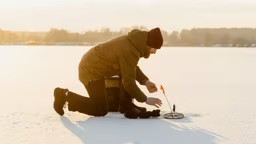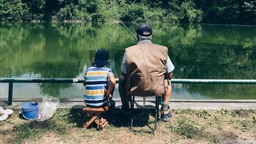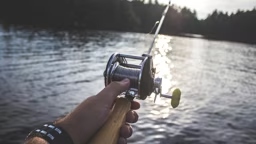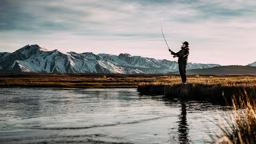
The lake cabin needs some spring-cleaning, but the water is getting warmer and the fish are moving into the shallows. Those chores will just have to wait for a while because spring is a prime time to go fishing.
This is my favorite season to wet a line. After a long, cold winter, sluggish game fish turn active and begin feeding heavily when balmy weather and warm spring rains cause the water temperature to rise. Fish get the urge to leave winter sanctuaries and move to shallow water to procreate.
Trying to get a bedding fish (especially one you can see) to bite can in many instances be more frustrating than casting blindly to spots. However, if you make the right preparations before your fishing trip and adjust to the changing conditions throughout the day on the water, you will consistently fill your skillet with fish fillets.
Here are 10 tips to help you prepare for your spring fish fry.
1. Plan ahead for your fishing trip based on the weather report. When I guided, most of my clients thought those calm, sunny days were great for fishing, but actually the cloudy, rainy days before a cold front usually produce the best fishing of the spring. There are exceptions to this rule. For example, bass and bluegills on their nests seem to get more active when the water warms on calm, sunny afternoons.
2. For nesting fish like smallmouth bass and crappie, look for places out of the wind such as sheltered pockets. But for non-nesters like walleye and white bass, look for windy open water spots where these types of fish spawn and use current to keep their eggs cleaned.
3. When you find spawning fish in shallow beds, cast out to deeper water to find bigger nesting fish like male bluegills or large female fish like crappies, which tend to suspend out in the deeper water.
4. Since many game fish cruise the shallows either feeding or looking for a suitable nesting spot, you need to see them before they see you. A good pair of polarized sunglasses will give you that edge over your quarry because it reduces glare shining off the water and allows you to spot cruising fish or any underwater cover that could be holding game fish.
5. When fishing in clear water with artificial lures, add a dash of color to any of your dull lures with marker pens to make the baits look more lifelike. Put a tint of chartreuse on the tails of tube baits to mimic sunfish hues or color the tips of your plastic crawfish’s pincers with an orange dye.
6. Make sure your reel is spooled with the right line for the specific task. Fluorocarbon is the best choice when fish are biting light because of its increased sensitivity (fish usually bite light after the passage of cold fronts, when water temperature drops and they become sluggish – you’ll know they’re biting light if you’re missing a lot of strikes). Monofilament works best for light spinning tackle because it coils less when coming off the spool to prevent those frustrating snarls and tangles. Braided line is ideal for fishing vegetation because it cuts through the weeds best.
See also Managing Lake Weeds at Your Cabin
7. Casting double rigs for crappies increases your odds of catching fish and allows you to present jigs or minnows at two different depths. You can also try a double rig on a fly rod with a sinking fly tied below a floating version, which is a deadly combination for shallow bluegills.
8. Learn the different types of banks where your favorite game fish will build a nest. Bass and crappies usually prefer to cruise along pea gravel or rocky bottoms in pockets of bays, while bluegills and other sunfish like to build nests on soft mud bottoms along points of bays.
9. If you need to keep your bait off the bottom, use as small of a bobber as possible. Smaller bobbers offer less resistance when a fish takes your bait, which allows the fish to pull it under easier so you can tell that you have a bite.
10. When fishing from a boat, either run your trolling motor on constant low speed or keep the motor turned off and use a push pole, drift with the wind or anchor in the shallows. Constantly turning a trolling motor on and off spooks shallow fish.
The fish are biting now, so drop that mop, pick up your fishing rod and get your line wet.










